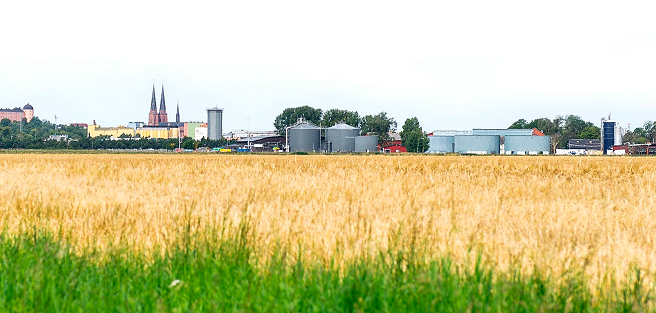Contact
Hans Liljenström, Prof. Dept. of Energy and Technology, SLU hans.liljenstrom@slu.se, +46 (0)18-671728, +46 (0)73-654 7977
The COMPLEX work package (WP) 4 is about “Socio-economic and land use dynamics in the Stockholm-Mälar region”.

It is intended to provide process understanding and instruments for support of the transition to a low carbon society by 2050 - with application to the Stockholm-Mälar region of Sweden. The aim is to analyze strategic societal choices and their consequences. This includes the design of a toolkit for analysis 1) of emerging and optimally selected land use patterns, 2) of economic development and the impact of policy instruments, and 3) of the processes connecting the scientific support to the decision making functions at various levels, including policy processes at shorter and longer time scales.
Different land use patterns will have different effects on the climate, and the climate, in turn, will constrain the options for land use. Whether land is used for agriculture, forestry, housing, industry, energy production, or infrastructure will depend on regional, national and EU policies, but also on cultural values and (sometimes conflicting) interests of various stakeholders. The dynamics of land use change and its environmental and economic impacts require analysis and models that can capture the complexity arising from irreversibilities, thresholds and nonlinearities involved. WP4 develops and uses computational models that are intended to aid stakeholders in their decision making, linking policies at the regional level to those at the levels of households and municipalities, as well as at national and supra-national levels. The models are developed partly as a result of various stakeholder interactions.
The COMPLEX WP4 model space consists of a number of socio-environmental models which support research on climate change mitigation actions. The model space consists of models which are very diversified in different aspects:
Model domains:
Climate, energy, land use, policy, economy, and decision making;
Spatial characteristics:
Vary from local to regional scales;
Temporal characteristics:
Range from hourly to yearly scales;
Model type:
Quantitative, as well as qualitative;
License type:
Some are open to the public and some are proprietary;
Methodology used:
Cost-benefit dynamics, LCA, neural networks, agent based, system dynamics.
Software tools include:
Matlab, Netlogo, GAMS, and LEAP.
Detail information about each model can be found by using the corresponding links provided.
Other models in the COMPLEX projects, provided by other work packages, can be found here:
http://owsgip.itc.utwente.nl/projects/complex/index.php/2015-01-29-08-35-56
COMPLEX WP4 Final Scientific Report
WP4 Summary brochure: "A LOW CARBON STOCKHOLM - MÄLAR REGION 2050"
Hans Liljenström, Prof. Dept. of Energy and Technology, SLU hans.liljenstrom@slu.se, +46 (0)18-671728, +46 (0)73-654 7977